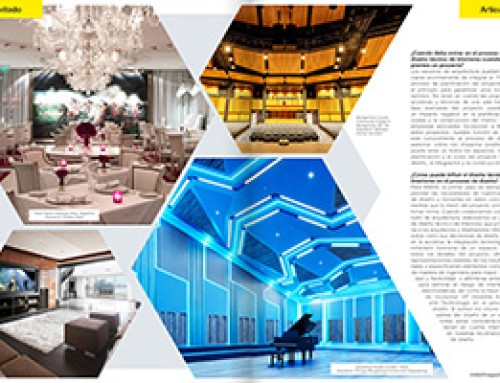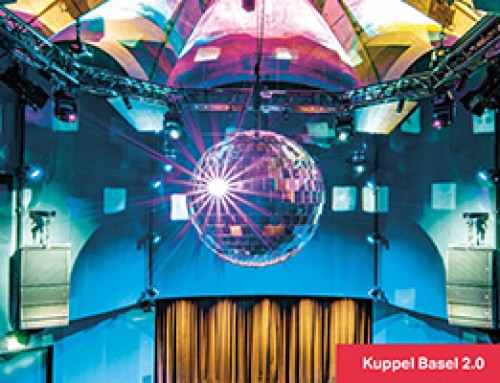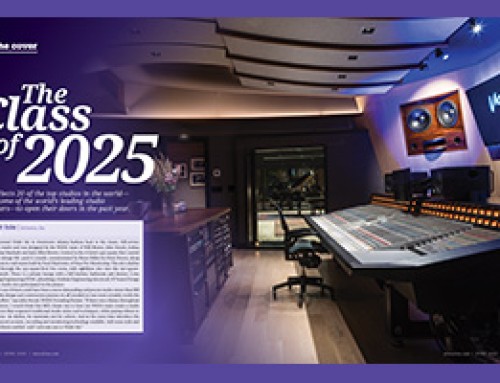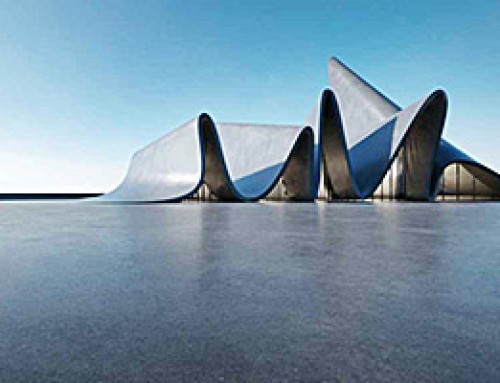The Food Network renovated an existing space for its new 5.1 audio mixing room.
Stations outside of the top 10 markets making the move from stereo to 5.1 surround-sound mixing of content for broadcast are challenged with trying to produce local content with multichannel audio in inadequate facilities. While most would like the luxury of a fully equipped audio post room, the realities of cost and space limitations are holding things back. Yet, there are cost-effective ways to redesign and reconstruct existing rooms that won’t necessarily break the bank.
That’s the view of The Walters Storyk Design Group, which specializes in critical listening and viewing environments and has worked on thousands of challenging space, time and noise sensitive projects including large production facilities like the Food Network in New York and public stations like WNET TV New York.
“I wouldn’t say the audio post facilities at most stations are woefully inadequate, but certainly there is now a need for virtually every station to get at least one 5.1 compatible production environment on line in the very near future if they want to stay competitive,” said company co-principal John Storyk. “At some point all broadcast programming will be distributed in 5.1, so all content will have to be produced — and post produced — in surround. It’s clear that broadcast sound is moving to 5.1, just as it moved to stereo years ago.”
What this means for stations is that they must rethink their environments and create new spaces (or newer versions of existing ones) that are acoustically sound. Good room planning and providing enough room for this type of environment to be created is the first step. For example, at the Food Network, an existing room was determined to be large enough to be converted for 5.1, but it did take some reworking of the room acoustics.
“In most cases, if the current stereo audio room is large enough, it can probably be converted to 5.1 with minimal construction costs, although this has to be looked at on a facility by facility basis,” Storyk said. “The usual problem suspect is low frequency control,” he adds.
The newly remodeled audio post room at Food Network is part of a 110,000sq-ft digital, HD-ready facility that features production studios, control rooms, audio and video post-production suites (in addition to a fully functioning 3500sq-ft support kitchen). The reworking of the room included new wall treatments and ceiling panels capable of addressing some existing internal acoustic problems, as well as new lighting fixtures and modifications to existing millwork. Storyk said that because the control rooms had been well planned initially, his team didn’t need to raise the ceilings or reformat them dramatically.
“This is where experience and teamwork play a deciding role,” he said. Storyk said the minimum requirement for a true surround sound mixing room is about 300sq ft to 350 sq ft , with a minimum ceiling height of about 11ft. Cost can be determined by how much work needs to be accomplished. New equipment, such as a new digital audio console, monitoring speakers and signal processing gear also has to be factored in.
“Exact costs are difficult to estimate unless I know what the challenges are, but most of the money in audio production rooms is in isolation, HVAC, electric,” he said. “In the case of Food Network, these costs were not an issue, since the existing room was adequate for this conversion.”
He said stations would see a return on their investment, the speed of which depends upon how much programming a station produces and whether they can work with outside clients to generate additional revenue from the new audio environment.
“Stereo has enjoyed a long run, so there is no question that the surround investment will be amortized over time,” Storyk said. “More and more large-screen, flat-panel sets are being manufactured in 5.1, so this is clearly the format of the short and possibly long-term future. The bottom line is to do everything possible to future proof your investment by making allowances for upgrades in wiring, speaker addition or replacement, etc.”
On every design project Storyk’s Highland, NY-based company works closely with station personnel to make sure everyone is clear about what the station wants and how to achieve it within budget. He said that’s where a professional design service really pays off.
“Unless your chief engineer is an architect and acoustician, you probably shouldn’t consider doing a job like this in house,” Storyk said. “There have been many times when we have been called in to correct mistakes because the proper planning and architectural design was not implemented properly in the beginning. I tell stations ‘do the work once with a pro instead of tearing out the first install and starting from scratch.’”
With the penetration of HDTV sets and home theater systems increasing all the time, stations have to sound good to match the newly enhanced on-air pictures. The competitive advantage that surround brings cannot be underestimated. Doing it right the first time saves money and time, which these days are critical to successful station operations.









